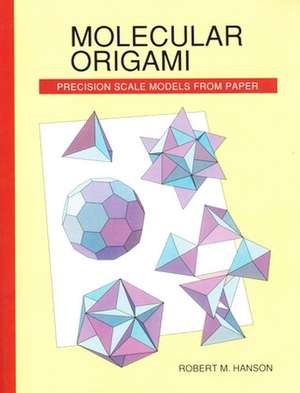Molecular Origami: Deciphering the Blueprint of Heredity
Autor Robert Hansonen Limba Engleză Paperback – 21 mai 1995
Preț: 292.89 lei
Preț vechi: 307.63 lei
-5% Nou
Puncte Express: 439
Preț estimativ în valută:
56.06€ • 60.92$ • 47.12£
56.06€ • 60.92$ • 47.12£
Carte indisponibilă temporar
Doresc să fiu notificat când acest titlu va fi disponibil:
Se trimite...
Preluare comenzi: 021 569.72.76
Specificații
ISBN-13: 9780935702309
ISBN-10: 093570230X
Pagini: 223
Ilustrații: illustrations
Dimensiuni: 217 x 281 x 14 mm
Greutate: 0.59 kg
Ediția:New.
Editura: University Science Books
Locul publicării:Sausalito, United States
ISBN-10: 093570230X
Pagini: 223
Ilustrații: illustrations
Dimensiuni: 217 x 281 x 14 mm
Greutate: 0.59 kg
Ediția:New.
Editura: University Science Books
Locul publicării:Sausalito, United States
Descriere
This is a fun, hands-on guide to understanding the basic structure and chemistry of matter. Drawing on the Japanese art of paperfolding, the book provides rip-out patterns for 124 molecules, along with easy instructions for folding them into scale models, many of which are three-dimensional. The molecules progress from simple ones like methane to more exotic structures such as quartz and buckminsterfullerenes. Questions and discussions are included.
"Who will use this book? Any chemist who is young at heart might like to snip, fold, and glue, and in doing so might well come away with a deeper knowledge of the bricks of their trade. Any teacher should be able to use them as an aid to teaching, at all levels ... Anything that renders chemistry less abstract, more tangible, is to be welcomed, and this unassuming, engaging publication deserves to be well received." P. W. Atkins, THES
"Who will use this book? Any chemist who is young at heart might like to snip, fold, and glue, and in doing so might well come away with a deeper knowledge of the bricks of their trade. Any teacher should be able to use them as an aid to teaching, at all levels ... Anything that renders chemistry less abstract, more tangible, is to be welcomed, and this unassuming, engaging publication deserves to be well received." P. W. Atkins, THES
Cuprins
Introduction
Part I: Basic Shapes, Basic Ideas
Part II: Advanced Shapes
Part III: Beyond Octahedra
Part IV: More Complex Molecules and Ions
Part V: Network Solids
Part VI: One- and Two-Dimensional Shapes
Discussion of Questions in Part I
Sources and Methods
Index
Part I: Basic Shapes, Basic Ideas
Part II: Advanced Shapes
Part III: Beyond Octahedra
Part IV: More Complex Molecules and Ions
Part V: Network Solids
Part VI: One- and Two-Dimensional Shapes
Discussion of Questions in Part I
Sources and Methods
Index
